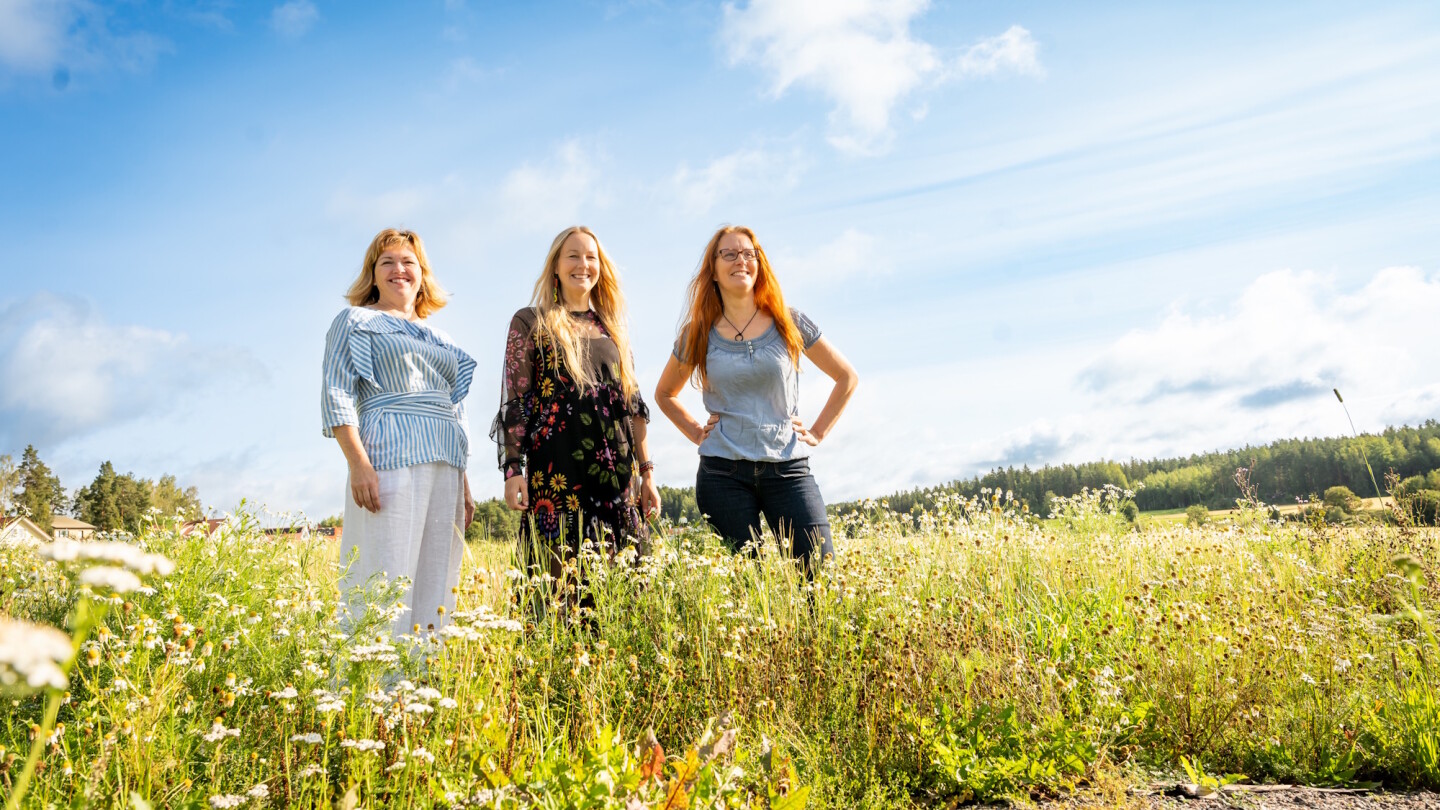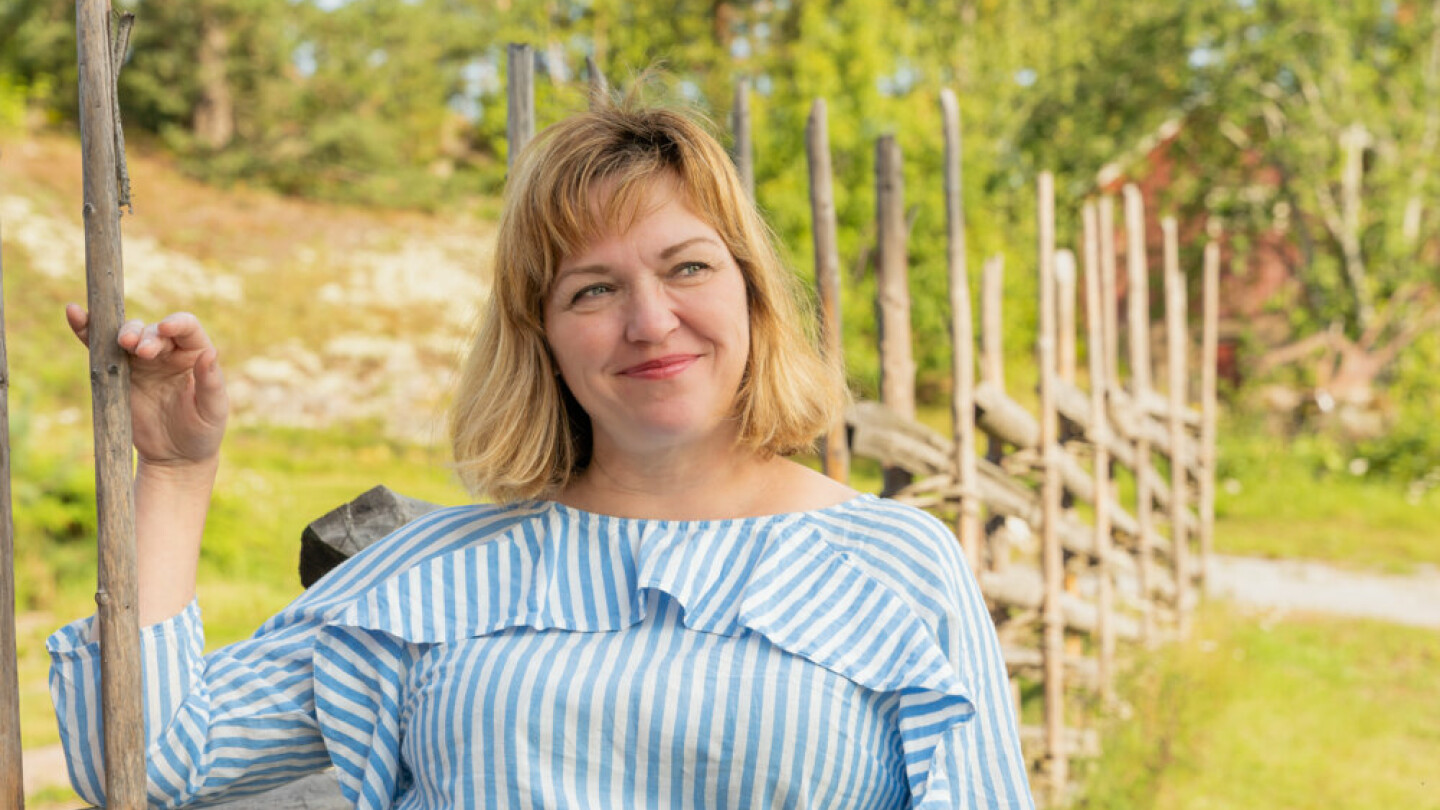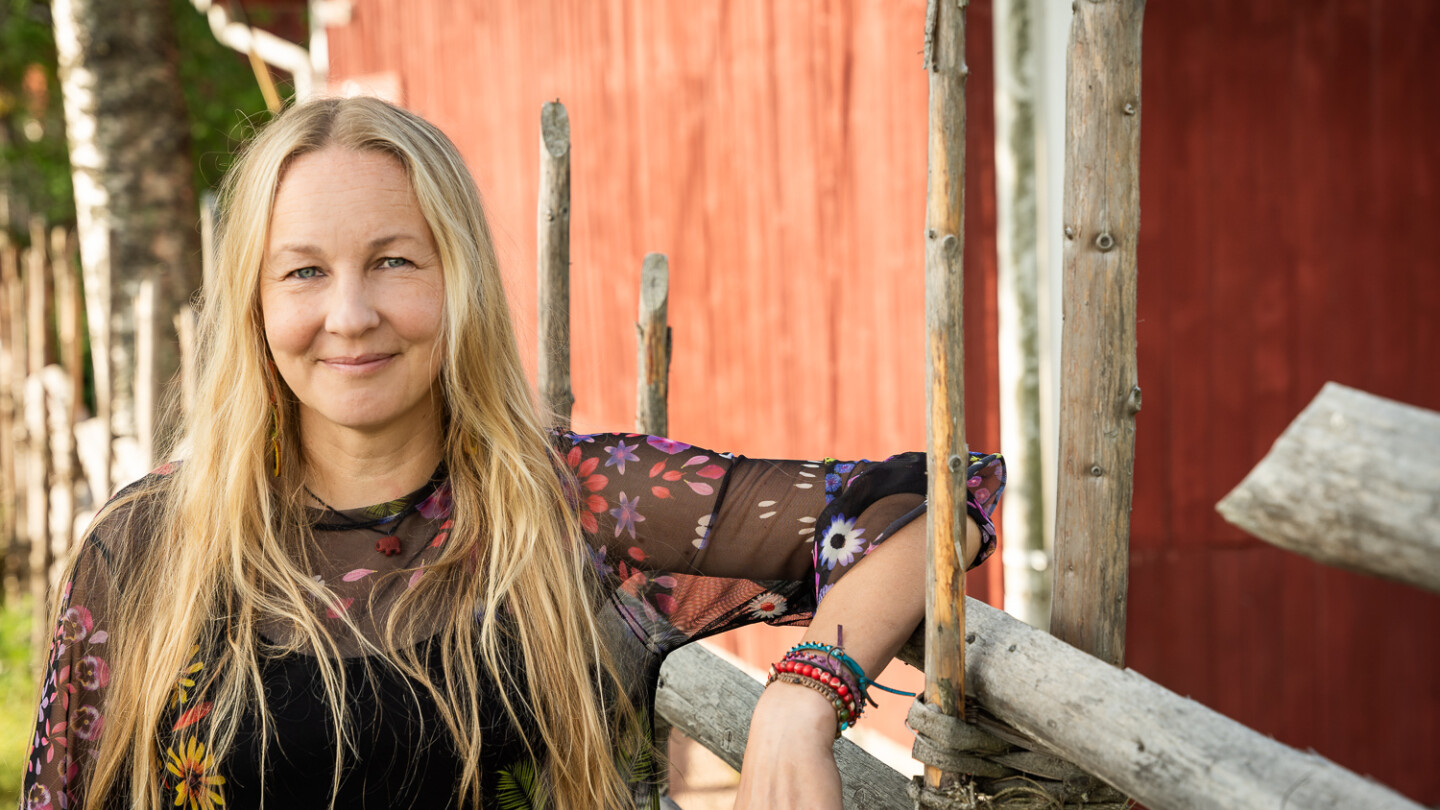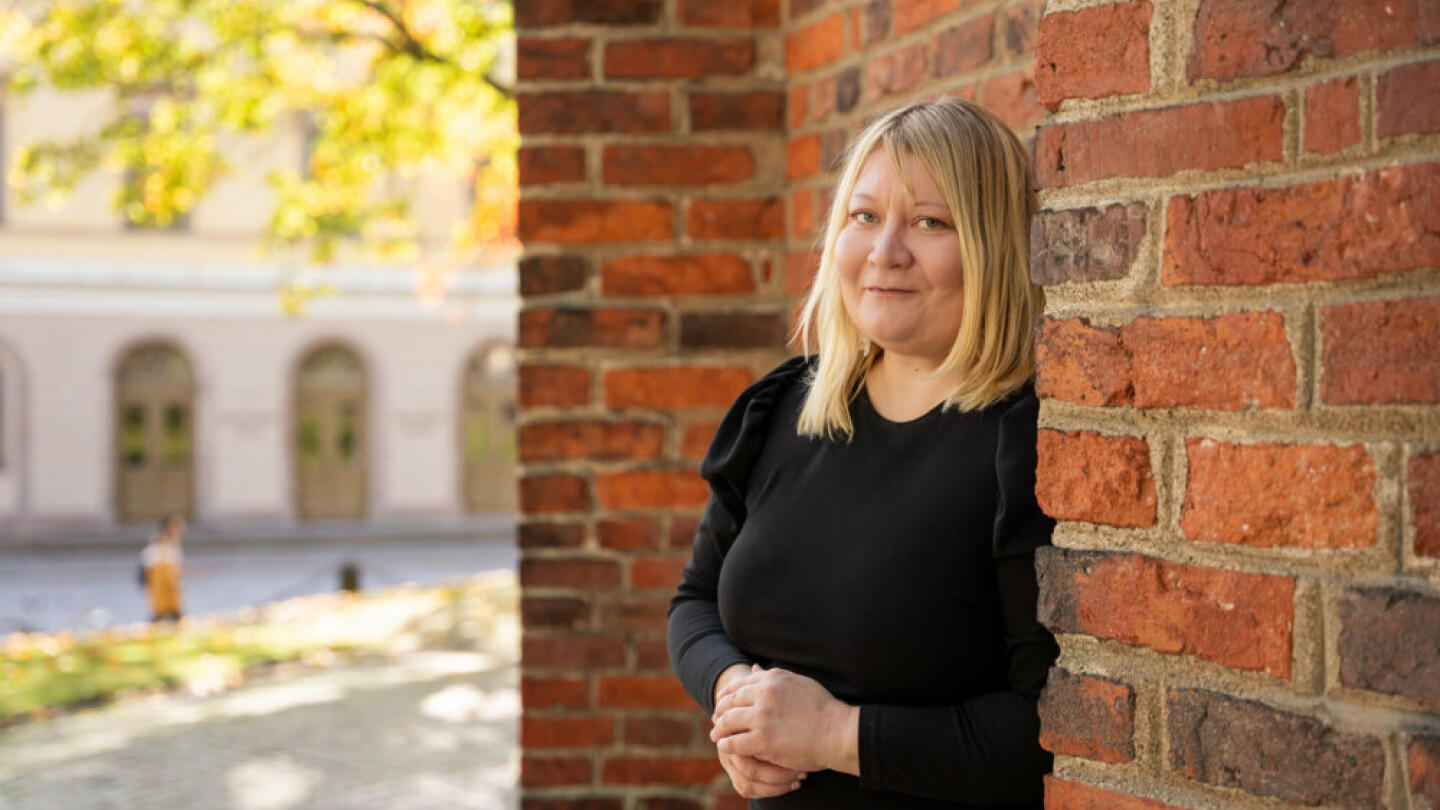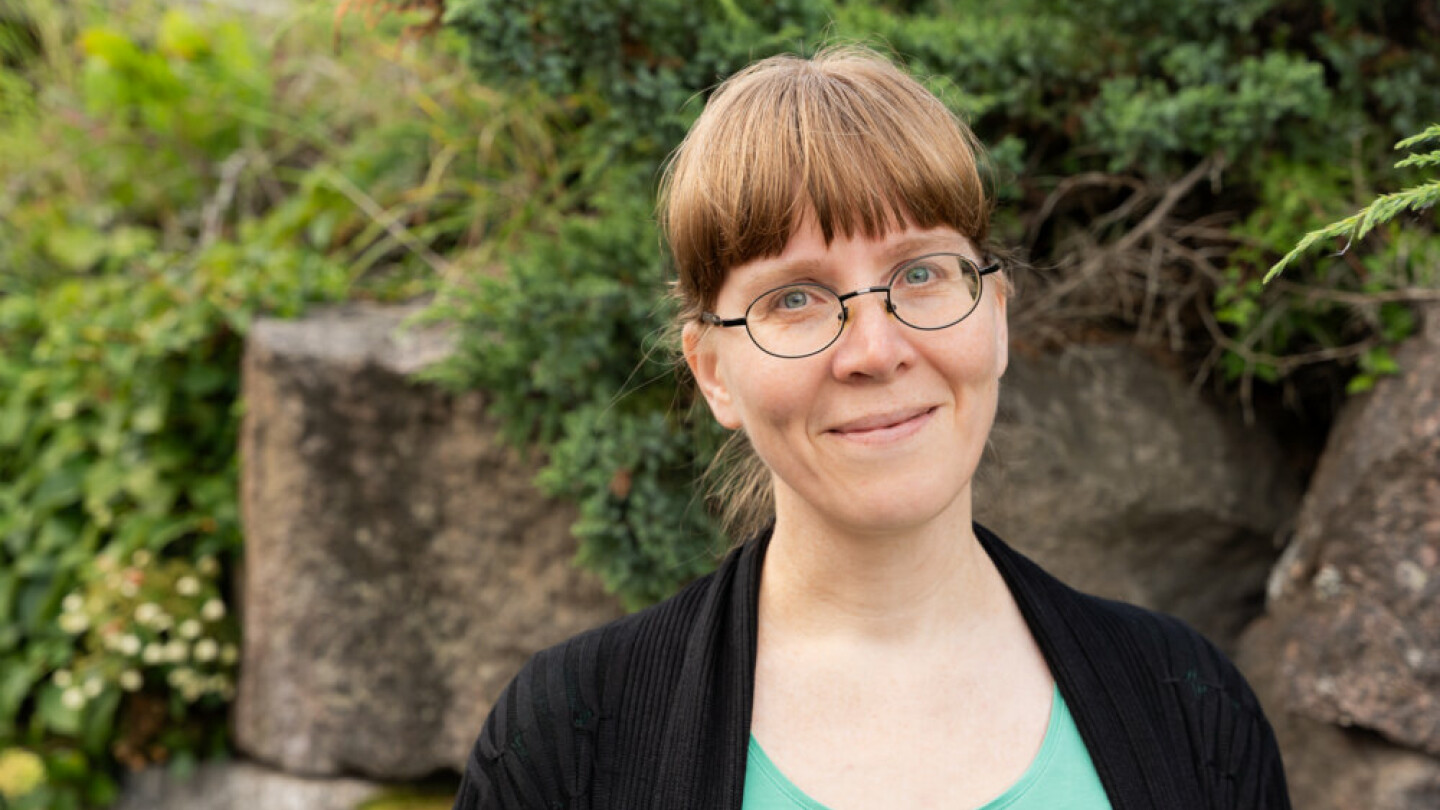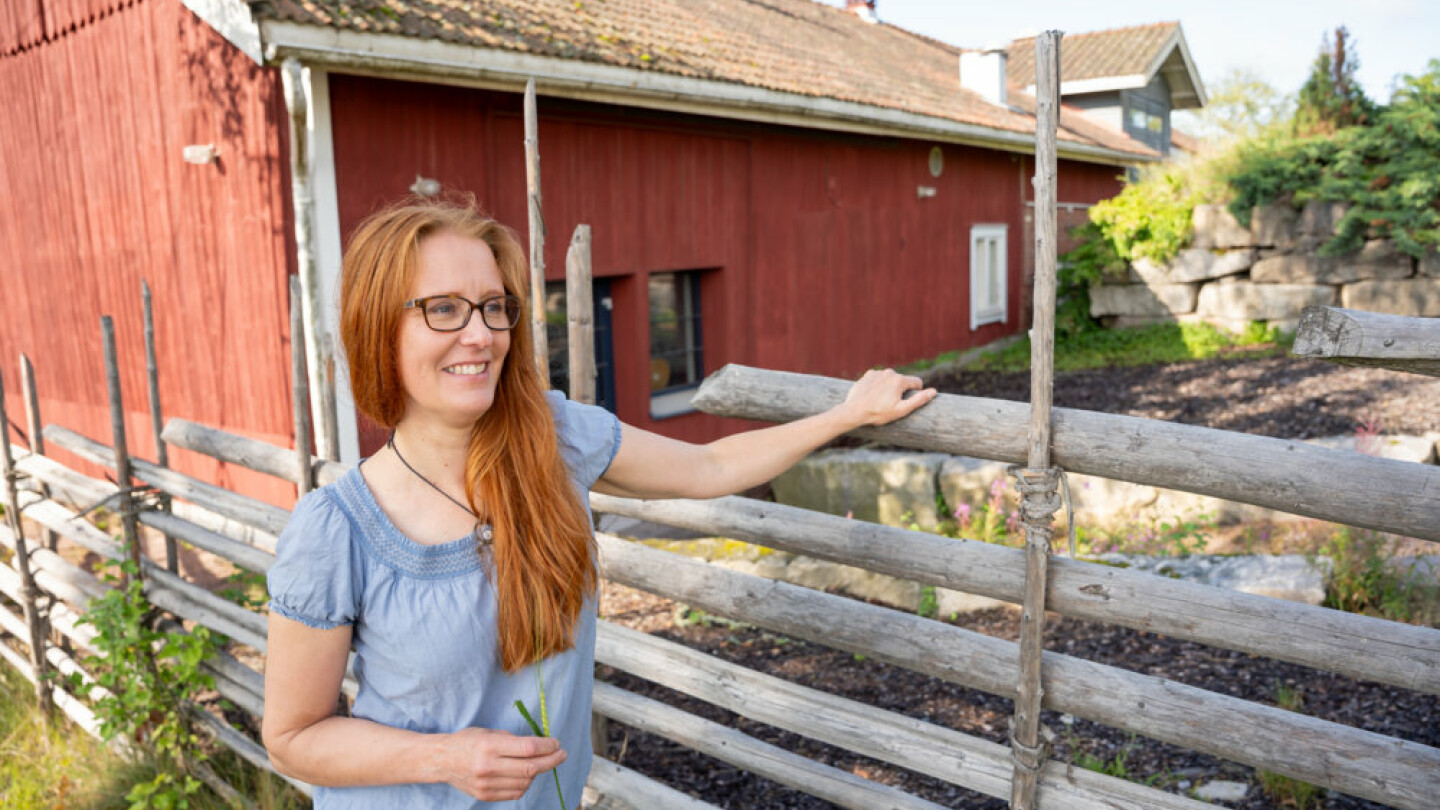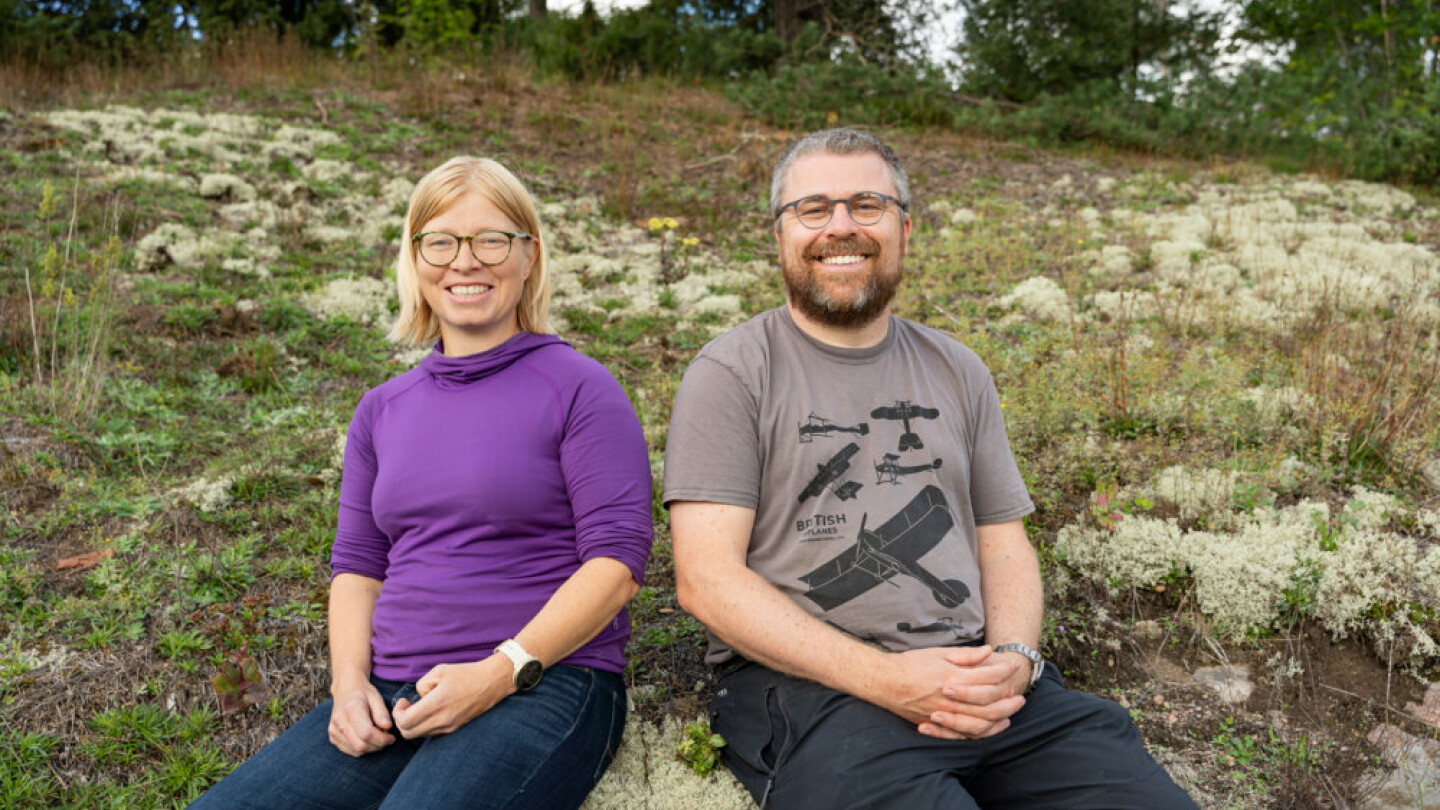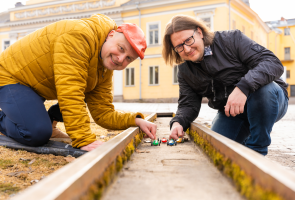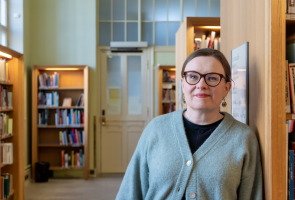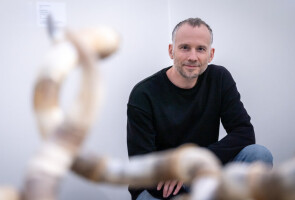People living in the area of Finland have never been a homogeneous group. Our cultural, genetic and linguistic heritage all have a diverse background and are in a constant state of change. People, ideas, customs and diseases have always moved from place to place and left their mark on the population. In a major research consortium, researchers are studying how these marks are still visible in people.
Human history in Finland starts after the end of the Ice Age, circa 11,000 years ago. That is also how far back the focus of the Human Diversity research consortium, which studies the Finnish identity from the perspective of culture, language and genetics, reaches.
After the Ice Age, people arrived in the area that is currently known as Finland from two directions. Hunter-gatherers arrived from the north-west through present-day Norway where, during the Ice Age, there was likely settlement originating from Central Europe as well. Another group of hunter-gatherers arrived from the south-east, from the area of present-day Russia.
“Two genetically different groups of hunter-gatherers arrived here. We do not know whether we still carry the genes of these people, but it is possible,” says Professor of Evolutionary Genomics Päivi Onkamo.
“There are archaeological traces of settlement since the end of Ice Age, which indicates that there has been continuous occupation since the first people arrived here,” notes Docent in Finnish Language and Finno-Ugric Languages, Collegium Researcher Outi Vesakoski.
People in western Finland tend to be healthier and have a longer life expectancy. They are even slightly taller than people in eastern Finland.
If we turn our focus back to the present day, we can notice that people living in the eastern and western parts of Finland are rather different from one another. The current division between these regions is so deep that according to researchers, we could even talk about two different populations. The differences are visible in genes, disease heritage, dialect as well as culture.
People in western Finland tend to be healthier and have a longer life expectancy. They are even slightly taller than people in eastern Finland. There are also several cultural differences related to, for example, food, festive traditions and building types.
Can the division of people in Finland into eastern and western Finns date back to as far as 11,000 years ago? Researchers have concluded that this is unlikely due to the multiple changes that have occurred over time in the genes, languages and cultures of the area. However, other types of divisions have existed in the area in the past. For example, the Corded Ware Culture only left traces to the south and west, and later, different cultivation methods entered the area from the east and west.
In a study led by Vesakoski, researchers used high-definition geospatial data prepared by the research consortium and discovered that the linguistic, genetic and cultural division that has existed in the area over the last centuries conforms to the east-west profile of Finland. Eastern features in language seem to predict eastern culture and genetics, and vice versa.
“This line of division is not just about Finland but is related to wider divisions in Europe and the western parts of Russia,” explains Vesakoski.
One factor that influenced Europe's line of division is the reign of King Cnut the Great of England, Denmark and Norway in the 11th century. People travelled a great deal within King Cnut's kingdom and different influences spread around the kingdom’s sphere of influence. Hence, fields of that era were cultivated with the same methods in Porvoo in southern Finland as in England, whereas in Lappeenranta in the east, the methods were already completely different.
In Finland, however, the division is a lot deeper than in other parts of Europe. It is exceptional that people who live so close to each other are genetically this different. Especially, when there is no mountain range or other land formations that would explain the situation.
“In Europe, you need to travel across half the continent to see the same degree of genetic difference as is observed across the distance of a few hundred kilometres in Finland,” notes Postdoctoral Researcher in genetics Elina Salmela.
Natural selection has not kept up with societal changes
Researchers of the Human Diversity research consortium are particularly interested in how human contacts have influenced – and are still influencing – our language, culture and heritage. In the multidisciplinary research consortium, this question is studied with extensive data covering paleogenetic data, parish registers, dialect maps, and archaeological findings.
“Human encounters shape us in different ways. It is important to understand how an individual's social and cultural background influence their success in life. For example, many aspects related to health with which we struggle today originate from the encounters of the people in the past. By understanding these influences, we can make predictions of their future significance,” says Professor of Evolutionary Biology Virpi Lummaa who is head of the research consortium.
Research data covers paleogenetic data, parish registers, dialect maps, and archaeological findings.
According to Lummaa, the Finnish lifestyle has gone through such a radical change during the past 200 years that biology has not been able to keep up. Along with the Industrial Revolution, a majority of Finns moved to the cities from the rural areas. What used to be a big community where children were raised by the whole village now became a small nuclear family with few children.
“Previously, child mortality was a bottleneck that influenced the continuation of the family. Natural selection has, in fact, resulted in the increase of such features and genes that helped babies to survive from diarrheal diseases, for instance. Today, the bottleneck is whether people wish to have or are able to have children. Here, natural selection is still somewhat lagging behind as those factors that previously helped children to survive now hardly have an impact on the continuation of the family. In the current situation, it would be more important from the point of view of natural selection to support couple formation and fertility than to fight child mortality,” says Lummaa.
In fact, those genes that provided protection for babies against different diseases two hundred years ago may now be harmful for us. For example, the ApoE4 gene used to improve the psychological survival of children living in conditions with high child mortality. That same gene, however, increases the risk of Alzheimer’s disease and its negative impact is highlighted today as people live longer.
“It would be interesting to study why mental health problems continue to exist even though they are harmful to people. Could they also be connected to the features that used to be beneficial or still are in some other stage of life,” notes Onkamo.
Kinship networks may influence human evolutionary fitness
In September 2023, the European Research Council ERC granted Lummaa with the esteemed ERC Advanced Grant funding, which is the largest personal research grant in Europe. The funding was granted for a research project that focuses on how major societal changes in the past 300 years have influenced human kinship networks and how they, in turn, have influenced the evolutionary fitness of people in the 18th to 20th century Finland. Lummaa also investigates the same questions in Asian elephants, which have suffered from declines in population size during the past 50 years due to human influence.
Lummaa’s studies have revealed that the presence of maternal grandmothers in particular increased the survival of young children as the grandmothers cared for their grandchildren. Whereas, rather surprisingly, the presence of older and weaker paternal grandmothers was detrimental for grandchild survival.
“This might have been due to the competition related to living under the same roof. Parents might have been forced to share their limited resources between the grandchildren and grandmothers who were both depending on them,” explains Lummaa.
One extremely exceptional event in Finland’s history from the point of view of population movement has been the evacuation of Karelians during World War II. According to researchers, the situation was like a huge natural experiment: inhabitants of an entire village might have been relocated around different parts of Finland. During the Finnish Continuation War, the aim was to evacuate people so that the inhabitants of one village could choose to remain together.
“We made an interesting discovery in one study: the closer the dialect of the new place of residence was to that of the Karelians, the more likely they were to settle in the area for a longer period of time. Ecological factors, such as the type of terrain, soil or climate, did not bear any influence,” says Lummaa.
“We assumed beforehand that a farmer would stay in an area if the ecology was similar, however, this was not the case. The dialect was the most important factor, although it was certainly linked to a similar culture. In the present day, this finding could indicate that the Ukrainian refugees who have moved to Poland might feel more at home there than the refugees who have moved to Finland might feel here,” notes Vesakoski.
Shedding light on diversity by studying individuals
Researchers of the Human Diversity consortium study the effects of human encounters from a wide perspective: from the Finnish prehistory up to modern day and from the point of view of several different disciplines. However, studying also the smallest of details or individual persons may increase our understanding of the communities of the past.
“By studying individuals of the past, we can find the type of diversity that easily stays undiscovered when making broad generalisations based on large data sets,” notes archaeologist, Postdoctoral Researcher Ulla Moilanen.
In her dissertation, Moilanen re-analysed a 1,000-year-old grave found in Suontaka, Hattula near Hämeenlinna in 1968. The grave had previously been considered a double burial of both a woman and a man, or a weapon grave of a female, since both feminine and masculine objects had been discovered from the grave.
The re-analysis confirmed that only one person had been buried in the grave. The person had been dressed in typical feminine clothes of the period and they had a hiltless sword placed on the left hip. Moilanen began writing the manuscript with the assumption that the grave was a weapon grave of a female.
Then, the study took a new turn. Postdoctoral Researcher in genetics Elina Salmela, who was in charge of the ancient-DNA analysis of the grave, discovered that the buried individual seemed to have sex-chromosomal aneuploidy XXY, which causes Klinefelter syndrome. The syndrome is often unnoticeable, but may cause breast growth, decreased muscle mass or infertility in persons who are assigned as male at birth.
“The DNA result in the study is based on a very small amount of data as very little DNA could be extracted from the human remains. Yet, according to the data, it seems likely that the individual found at Suontaka had sex chromosomes XXY,” says Salmela.
The result was a complete surprise to the researchers, and one of the world’s first XXY individuals discovered with ancient-DNA analysis. A couple of other XXY individuals were also discovered around the same time with Salmela’s findings.
“We can never know how this person identified themselves. Genes do not determine a person’s gender identity. The chromosome result indicates that the buried individual most likely had a male-typical body. However, they had been dressed in typical feminine clothes of the period, and the objects placed in the grave were typical for both males and females. The selection of objects in the grave would be exceptional in any case, even if the buried individual had some other chromosome combination,” says Moilanen.
The Suontaka grave suggests that the buried individual was respected in the Iron Age Finland as a person whose gender expression differed from the typical customs of the era.
The furnishing of the grave suggests that the individual was a highly respected member of their community. They had been laid in the grave on a soft feather blanket with valuable furs and items.
“The burial assemblage was ample and careful, which indicates that the person was respected and valued. This also suggests that the aim was not to humiliate the individual by dressing them in feminine clothes – instead, it seems the individual had a good social standing,” explains Moilanen.
The Suontaka grave suggests that the buried individual was respected in the Iron Age Finland as a person whose gender expression differed from the typical customs of the era.
“After the study was published, we have received several messages from people saying how great it has been to hear that individuals they can identify with have already existed in the Iron Age,” says Salmela.
Roots of Finnish language might be in trade
Finnish language, or more specifically its ancestor Late Proto-Finnic, has perhaps been introduced to Finland circa 2,500 years ago. The even earlier roots of the Finnish language might be in trade.
The linguists from the University of Helsinki suggested last year that the Uralic languages spread and developed into different languages through the Seima-Turbino trade network. The trade network was active in Eurasia during the Bronze Age c. 2300–1700 BCE and extended all the way from Central Mongolia and South Siberia to the Baltic Sea. Particularly bronze objects were traded.
“The assumption is that the Proto-Uralic language spread through the trade network, and the resulting dialects were a common language of trade. Since the trade network was extensive, people around Eurasia needed a common language,” explains Outi Vesakoski.
One extreme interpretation for the origins of the Finnish language is that the people who arrived to the area currently known as Finland and spoke the early forms of the Balto-Finnic languages were, in fact, Balts who had changed their language. It is known that the populations were in interaction and there are several Baltic loan words in Finnish.
“A population can change their language if the other language becomes useful and slowly starts to be seen as more prestigious. This is somewhat similar to how people in Finland today use English as a working language and companies are often named in English,” compares Vesakoski.
The Late Proto-Finnic most likely first spread to Southwest Finland where people from the area of present-day Estonia migrated. From there, the language slowly spread around Finland, and most likely also from present-day Karelia. Nevertheless, Balto-Finnic languages were only spoken in southern Finland in the Early Middle Ages – in other parts of the country, people spoke Sami or languages from language groups that have since disappeared.
“If Mikael Agricola, a Finnish clergyman who is often called the father of literary Finnish, had not created Standard Finnish at the time of the Reformation in the 16th century, we would most likely speak different languages in the east and west,” says Vesakoski.
Using AI to access ideas on the internet
Human encounters are not exclusive to the physical world as ideas and thoughts also spread through texts and the internet. With the help of language technology that uses artificial intelligence, it is possible to study when an idea was born, where it has been influential, and how it has developed.
“One of our research group’s current studies focuses on conversations related to climate change. With language technology, we can study how the topic is discussed in the news and on social media in different languages. We can, for example, see whether the topics of conversation are transferred from the news to social media or the other way around,” says Professor in Digital Linguistics Veronika Laippala.
With the help of language technology that uses artificial intelligence, it is possible to study when an idea was born, where it has been influential, and how it has developed.
The aim of the researchers is to use language technology to study human diversity in the digital world. On the other hand, AI is also used to speed up the processing of different data from the past.
“Previously, we have studied historical texts, such as French and English texts from the 18th and 19th centuries. There is a massive amount of text in the world that hardly anyone has read. We have been interested in finding out what is out there: what individual people have thought and what has been written in books that were not well known. The same could also be done in Finland, insofar as texts have been digitised,” notes Professor in Language Technology Filip Ginter.
While a majority of the texts written in the past centuries have been digitised in France and England, digitisation in Finland is not yet on the same level. When it comes to news, however, the level of digitisation is good in Finland as well, as newspapers and periodicals have been rather comprehensively digitised.
Laippala and Ginter, who are part of the TurkuNLP research group, have developed machine learning methods for automated modelling of paraphrases, that is, statements that convey the same meaning from different types of text.
“If we focus on two texts discussing the same topic or idea, this method can identify their similarity even if the texts use different words or are written in different languages. The same can also be done on a larger scale,” explains Ginter.
With AI, it is possible to quickly compare a piece of text to all other texts written on the topic. AI-based linguistic research focused on historical texts and conducted on such a large scale is rather rare on a global scale.
“We could study the spread of ideas in Finland by automatically going through all the digitised texts from a certain period while searching for repetitions. Another option would be to focus on a single theme and see what has been written about it,” explains Laippala.
One goal of Laippala and Ginter is to find out whether they can identify, only with the help of language technology and linguistic style, where in Finland different digital texts have been written. This would make it possible to study whether the division of people into eastern and western Finns is visible online as well.
Researchers of the Human Diversity consortium point out that globalisation is not a new phenomenon, as humans, ideas and thoughts have always moved from place to place, even in the prehistoric times. The researchers want to dispel the idea that Finnishness is some kind of an ancient concept formed in isolation from the rest of the world.
“We have had immigrants and various encounters between people throughout the history of Finland. There is no point in thinking that the so-called native Finns will soon cease to exist if people move here from abroad. People have always come and gone. Our culture, language and genes have always changed and will continue to change in the future,” concludes Lummaa.
Cultural memory and social change is one of the six strategic research and education profiles of the University of Turku. The Research Council of Finland has granted the Profi 7 funding that supports research profiling of universities to the Human Diversity research consortium for the term 2023–2028.
Text: Jenni Valta
Translation: Saara Yli-Kauhaluoma
Photos: Hanna Oksanen

